Having become an independent state in 1839, Luxembourg's geopolitical situation did not make for an easy beginning as it found itself located between France and Germany, two increasingly antagonistic nation states, as well as Belgium, which considered Luxembourg a lost province. This situation forced the new little state to find a complex, fragile and perilous balance between its own interests and those of its neighbours, on whom it depended in numerous regards, and who frequently confronted it with major dilemmas and forced choices that it was rigorously held to by neighbouring capitals.
Until the emergence of the project for European integration, Luxembourg's entry into the international systems of various historic periods failed to allow it to resolve the dilemmas imposed by its geopolitical location and its small-state status. The Second World War had led it to abandon its neutrality which failed to protect it, and join the Allied forces and then the Atlantic Alliance. The political order established in Western Continental Europe after the world war was based on reconciliation between France and Germany and new cooperation mechanisms founded on the basis of equality between sovereign States. This new situation finally allowed Luxembourg to have openly cordial relationships with its big neighbours; these relationships were marked by mutual recognition of their interests, and thus helped overcome the protracted dilemmas.
Having been one of the founding members of Benelux in 1944, of the UN in 1945, of NATO in 1948 and of the Council of Europe in 1948, Luxembourg became one of the six founding members of the European Coal and Steel Community (ECSC), which would itself evolve to become the European Union we know today.
It was in this context that the capital of the Grand Duchy became the first working place for the Community institutions when the ECSC's work started on 10 August 1952, making it the first European capital. Along with Brussels and Strasbourg, Luxembourg City is still one of the EU's capitals: it is home to services of the European Commission and European Parliament, while the European Court of Justice, the European Court of Auditors, and the European Investment Bank, among others, have their headquarters there.
Luxembourg, a force for ideas throughout the history of the European Union
Luxembourg has played and continues to act as a mediator and a force for ideas at the heart of the European Union, either as a Member State or through some of its leaders.
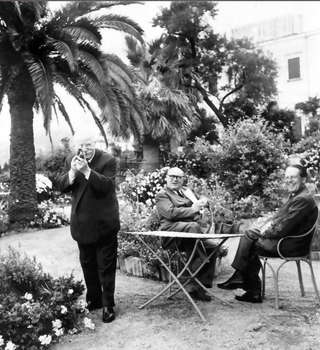
In 1970, Prime Minister Pierre Werner sponsored the report that bears his name and
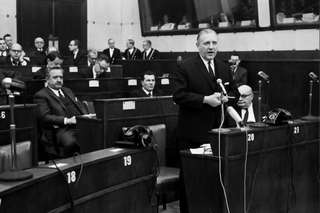
The Prime Minister and Foreign Minister Gaston Thorn was President of the European Commission between 1981 and 1984.
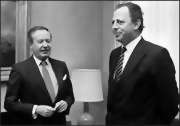
As Luxembourg's Finance Minister, Jean-Claude Juncker, now President of the European Commission, participated in the Maastricht Treaty negotiations. He then negotiated the Treaties of Amsterdam, Nice and Lisbon as Prime Minister. He was President of the Eurogroup from 2005 to 2013.
Citizens and stakeholders needed convincing in Luxembourg too
But what seems obvious in 2015, was not necessarily so at other times.
On 9 May 1950, the French Foreign Minister Robert Schuman (a man from Lorraine who was
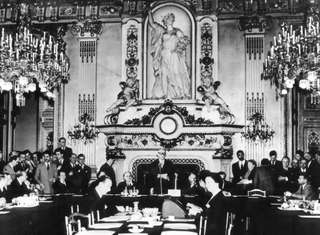
In 1950, Luxembourg was one of Europe's major steel producers and its steel industry represented 88% of the country's total exports, 75% of its industrial production and 25% of its active population. The Franco-German reconciliation Robert Schuman aimed for was among the vital interests of Luxembourg's foreign policy. Alongside its partners in Benelux, Italy and Germany, Luxembourg accepted France's invitation to attend the Intergovernmental Conference that opened on 20 June 1951 to draft the treaty that was to implement the objectives set out in the Schuman declaration.
The new approach of the ECSC gave rise to some fears within the national steel industry, but Luxembourg's Foreign Minister Joseph Bech was successful in convincing the main stakeholders and the country of the strategic and long-term interest of the ECSC. As a result, Luxembourg became one of its six founding members and had a voting member within the High Authority. Joseph Bech also secured the ability for the Council of Ministers to control or even annul decisions made by the High Authority, and made it possible to review its decisions by appealing to a Court of Justice that presaged the current European Court of Justice.
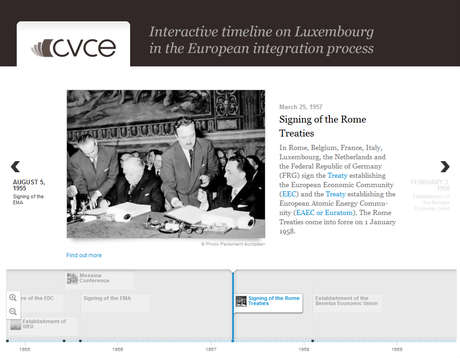
In 1986, the EU's enlargement to include Spain and Portugal brought new controversies. There were fears in Luxembourg and in the other Member States of an immediate implementation of the clause on free movement of workers. Luxembourg was afraid that it would be invaded by thousands of Portuguese citizens looking for work. As a result, exemptions from the customs union and free movement were agreed and which the Luxembourg government considered a success.
The Treaty of Maastricht also gave rise to controversy in 1993 and 1994. One of its major innovations was the idea of European citizenship. In addition to extending the rights of establishment, movement and residence, a new right was created: the right to actively and passively participate in European and local elections in the EU citizen's country of residence. This
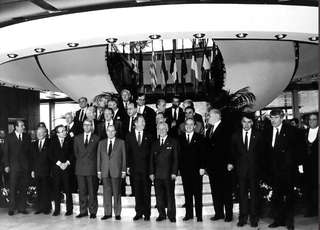
Now things have changed. Any EU citizen can vote and stand as a candidate in the European elections in Luxembourg, so long as they were residing in the country when their application to be included in the electoral register was received, as provided by the law. To vote in municipal elections, a citizen must be resident in the Grand Duchy and have been a resident for at least five years when they apply to be included in the electoral register, as provided by the law. The exemption dating back to the Maastricht debates has been relaxed but still partially exists.
The 2005 referendum on the draft Constitutional Treaty: A moment of doubt
Like Spain, France and the Netherlands, Luxembourg was one of the four Member States to hold a referendum asking their citizens to approve the planned European constitution in 2005.
The project was launched to remedy loopholes in the Amsterdam (1999) and Nice (2001) treaties, notably with a view to the major enlargement foreseen for 2004. From 2002 to 2003, a European Convention attended by representations from the governments and parliamentary representatives of the Member States and candidates for enlargement, was tasked with "examining the key issues" raised by enlargement and with "investigating the various possible solutions".
The Convention presented a draft Treaty establishing a Constitution for Europe (TCE), which the Member States' Foreign Ministers signed on 29 October 2004. The text was to enter into force on 1 November 2006, provided that all of the Member States ratified it. The text sets out the values on which the European Union is based in a structured form for the first time. The Constitutional Treaty's preamble recognises Europe's "cultural, religious and humanist inheritance" as well as its freedom, democracy, equality and the rule of law.
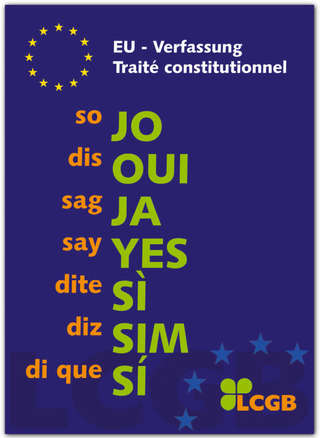
The innovations from the TCE that were not selected for inclusion in the Treaty of Lisbon included: reduced membership of the European Commission after 2014, corresponding to two thirds representation of the Member States, according to a system of equal rotation among the members; the option for Member States to withdraw from the European Union; the ability of the national parliaments of a third of the Member States (or a quarter in some cases) to compel the Commission to re-examine a proposal if they believe it infringed the principal of subsidiarity.
On 10 July 2005, when France and the Netherlands had already voted no to the treaty (in May and June 2005), Luxembourg's electorate voted in favour with a small majority of 56%, following a campaign of national debates in which federalists, the pragmatic and nationalists exchanged their arguments.
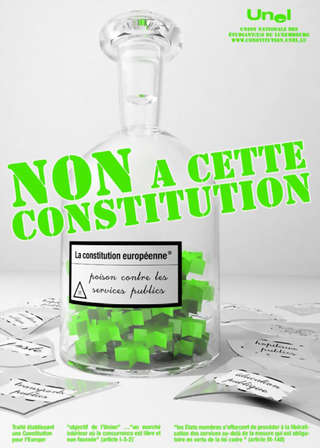
A study commissioned by the Chamber of Deputies revealed the divide between politicians and citizens. All the political parties represented in the Chamber (except the ADR sovereignist party), which represent 90% of the votes cast in the 2004 national elections, voted in favour of the treaty, while only 55% of citizens voted yes. All the political parties' youth wings campaigned in favour of the treaty, but most young people voted no in the referendum. All of the main trades unions, except the railway union and one union federation which has since folded, supported the treaty, while most workers voted no. Nevertheless, the study revealed that other civic organisations and professional associations seemed closer to the concerns of ordinary voters in their arguments about the treaty.
The study also revealed several underlying factors favouring the 'no' vote: latent social unease; that political parties defending the yes vote did not seem to understand citizens' concerns; the fact that political parties lost control of the political agenda and had to adapt to the agenda of the no campaign in the run-up to the vote; the campaign and results of the referendums in France and the Netherlands influenced the vote in Luxembourg; dissidence within the parties, notably the Greens and Socialists, and left voters who voted 'no' with sovereignist connotations. According to the study's authors it was "the Prime Minister and his party", i.e. Jean-Claude Juncker and the CSV, who, "in this ‘identity-orientated’ and ‘social’ context, knew how to re-play the role of the Governing Party, i.e. the people in possession of knowledge about European Policy and those who defend the Grand Duchy's interests in Europe, who (...) ensured the victory of the 'yes' vote on the back of their Presidency of the European Council in the last two weeks of the campaign".
While 18 Member States of the European Union ratified the Constitutional Treaty, the French and Dutch 'no' votes in referendums held in those countries finally blocked the process of ratifying the Constitutional Treaty, and it never came into force.
The Treaty of Lisbon
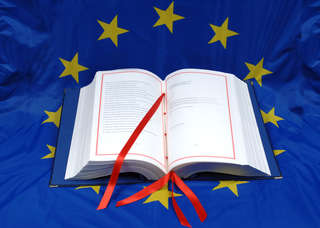
Having taken part in the Convention, Socialist Ben Fayot was the rapporteur for the draft legislation. He highlighted the Lisbon Treaty's three main innovations in terms of increased democracy: inscribing European citizens' rights in the European Charter of Fundamental Rights and the creation of the principal of the citizens' initiative ; the renewed role of the European Parliament, with co-decision becoming the standard legislative procedure, and the strengthening of the role of national parliaments, which became directly involved in the EU's decision making process. Other innovations of the Lisbon Treaty concern the institutionalisation of the European Council, which acquired a president, and the simplification of voting at the Council of Ministers. The new treaty aims to make the European Union more efficient, more democratic and more transparent. It also aims to give the European Union the means to direct policy in domains that citizens consider to be of key importance: energy, climate change, Europe's role in the world, a common immigration policy and a more social Europe. It also targets the protection of the rights conferred by the Charter of Fundamental Rights.
In his speech, Fayot argued that "European integration is the bedrock of contemporary Luxembourg. (...) In the same way that we don't question democracy when there's a political problem, we shouldn't and cannot fundamentally question Europe when we don't agree with something". In a plea for Luxembourg to commit further to Europe, he concluded: "Europe, is what the Member States make of it. We must be present in Europe".

